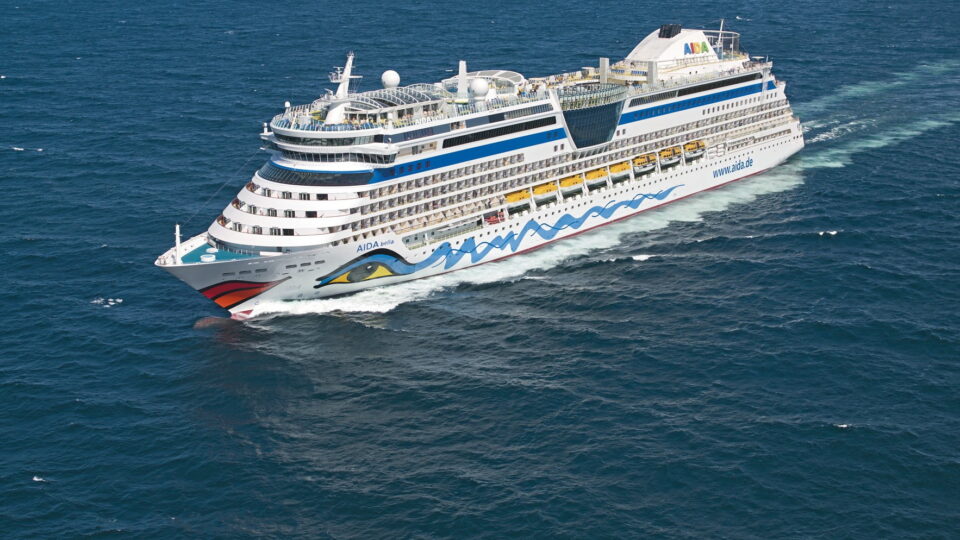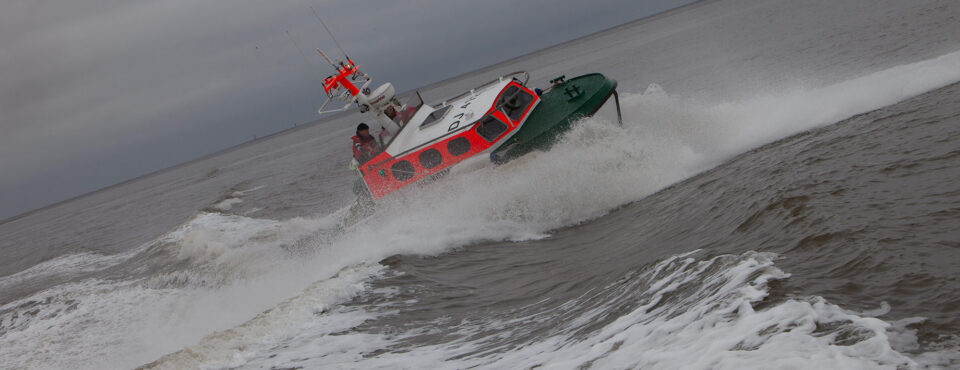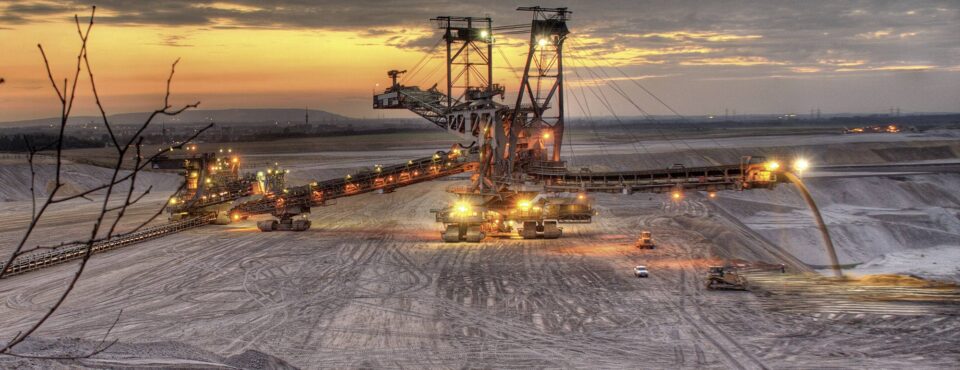Hamburg’s locks operate with HANSA-FLEX hoses
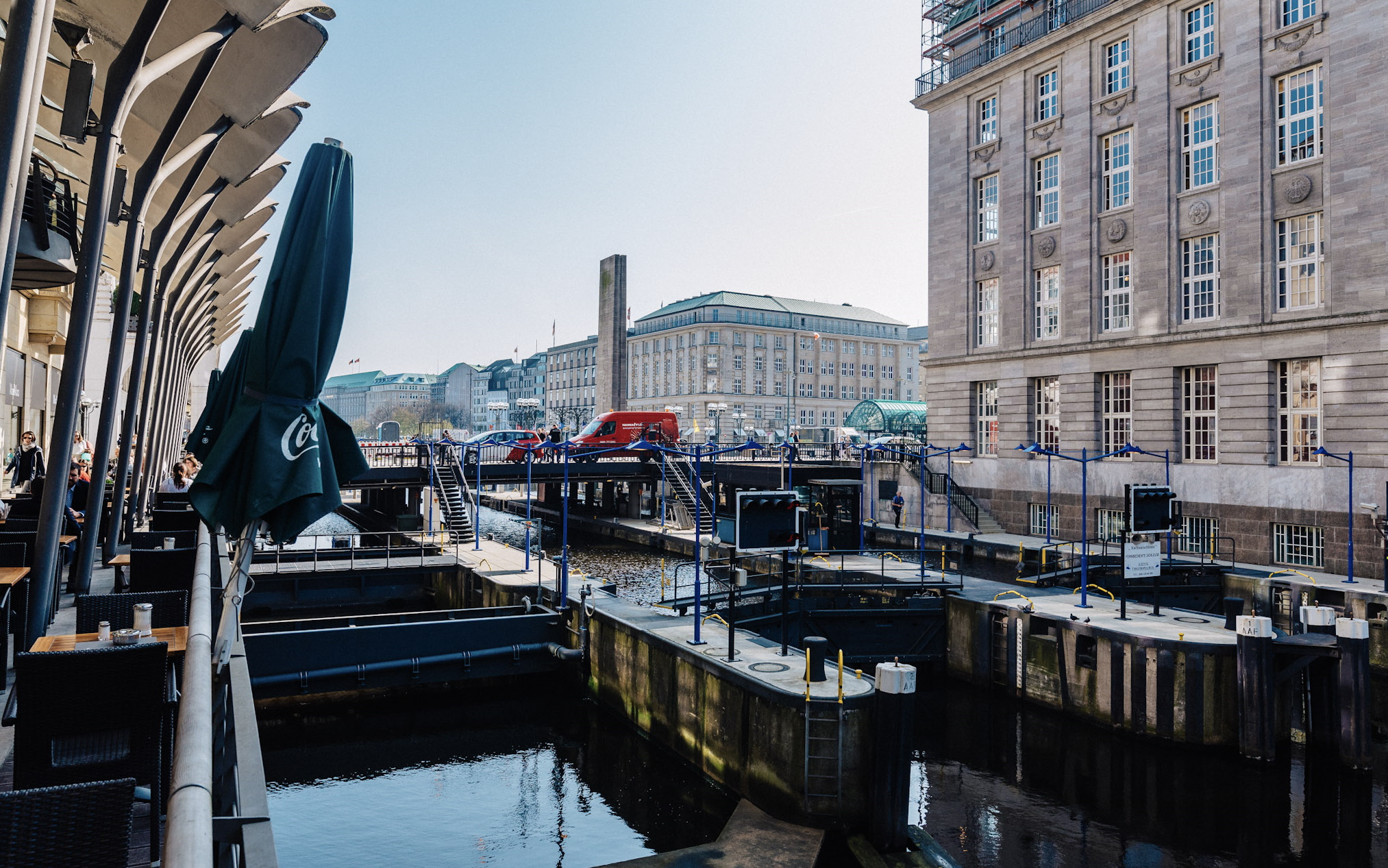
12.03.2024
Built close to the water
It’s impossible to imagine Hamburg without water. In addition to the port, the Hanseatic city is characterised above all by areas of water such as the Inner and Outer Alster lakes, as well as numerous large and small rivers and canals. But the picturesque water landscape in the middle of the city is also dangerous: sophisticated flood management therefore not only provides protection against storm surges and floods, but also balances out the daily tidal range of the river Elbe. At the heart are the 12 locks and three flood barriers, which allow the controlled inflow and outflow of the water masses.
Although Hamburg is more than 100 kilometres from the sea, low and high tide are still clearly noticeable: at high tide, the water level of the Elbe in the port rises by more than 350 centimetres, with enormous amounts of water pushing down the Lower Elbe towards Hamburg. “Numerous locks, gates and pumping stations control the inflow and outflow, balance the water level and exchange the water in the canals. Flood management is required not only at low tide and high tide, but also during heavy rainfall,” explains Juergen-Rainer Strohmann, Coordinator and Head of Maintenance Fitters at Hamburg’s Department of Roads, Bridges and Waterways (LSBG).
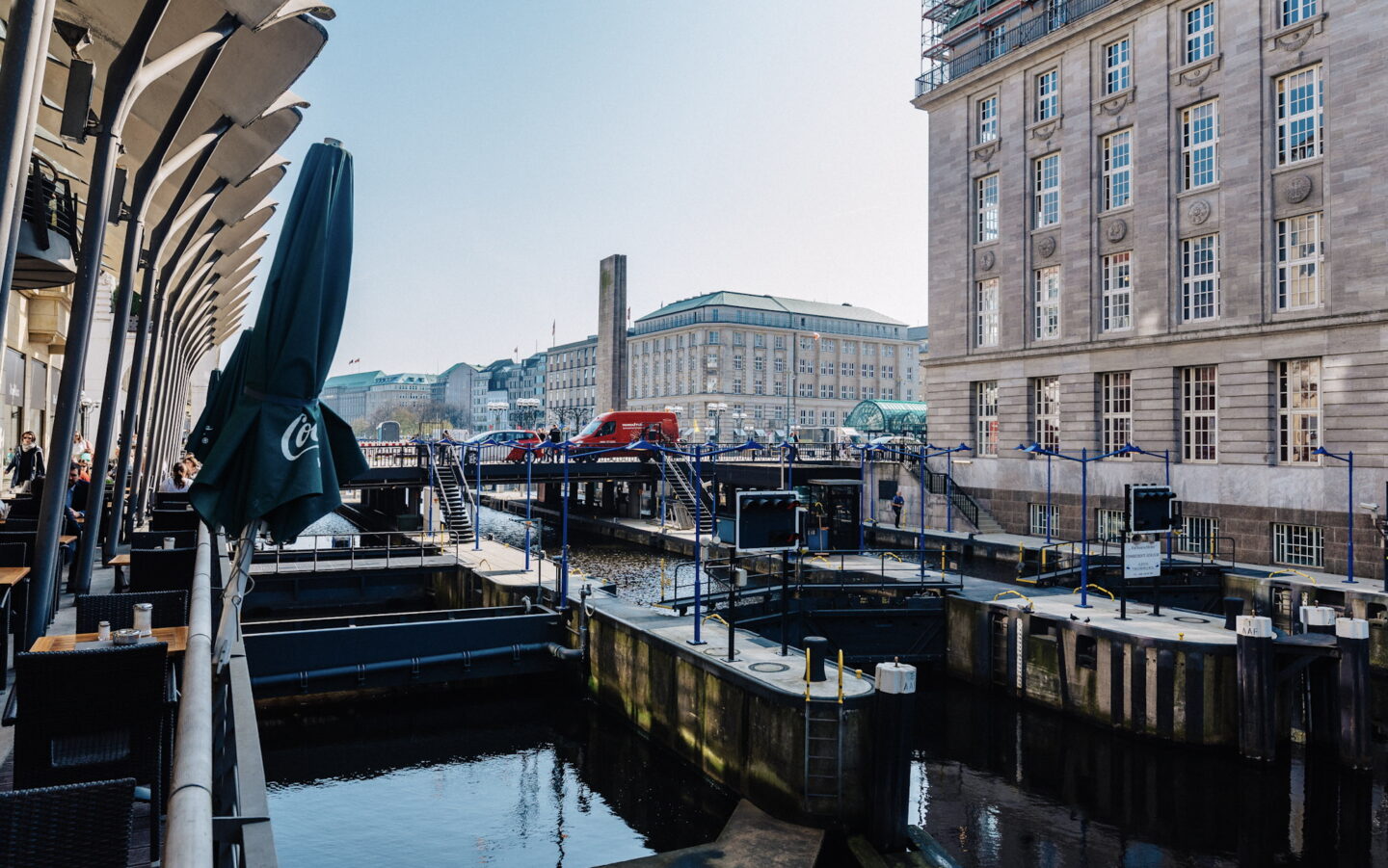
The sluices are equipped with rotating gates and wings weighing up to 20 tonnes, which are opened and closed via large hydraulic cylinders to regulate the water levels.
Locks in continuous use
The LSBG is responsible for the waterways in general and for the coastal and inland flood protection of the Hanseatic city in particular. It is therefore also responsible for Hamburg’s locks outside of the port. The locks are equipped with swing gates and wings weighing up to 20 tons, which are opened and closed via large hydraulic cylinders in order to regulate the water levels. The gates are not only moved during floods, but also many times a day to allow ships through. The cylinders and the hydraulic unit are designed to be correspondingly powerful, and the hose lines are subject to relatively high stress. Regular maintenance is mandatory: “We chose HANSA‑FLEX because we were looking for a partner that can also reliably handle large projects,” says Strohmann.
“We chose HANSA‑FLEX because we were looking for a partner who could also safely handle larger projects.”
Juergen-Rainer Strohmann
Coordinator & Head of Fitters Maintenance LSBG
General staff planning
Whether it’s the regular replacement of hose lines, the modernisation of locks or the conversion of installations: LSBG’s projects are extensive and complex. At a joint advance inspection, a list is therefore made of all hose lines and the required connections and fittings, as well as the valves and pumps, and their special structural features are recorded. “On this basis, we plan materials and employees, coordinate the work flow and prepare ourselves for the assembly situation – everything in close consultation with our customer,” reports Jochen Meyer from the Hamburg-Billbrook branch. Because the hose lines are laid outdoors, weather and ozone resistance play a major role: sun and rain as well as wide temperature fluctuations place a much greater strain on the materials than, for example, the constant ambient conditions experienced in a dry factory building. In order to simplify future inspection work, the LSBG is currently introducing a hose management system. New hose assemblies are managed using the My.HANSA‑FLEX portal, and existing assemblies are also being retrofitted with the X-CODE.
Complex assembly
While small jobs are implemented by the Rapid Hydraulic Service, for the installation of hose lines in an entire system the Industrial Service with a team of technicians is used. “The biggest challenge is the installation situation, which is different for every lock and flood protection gate,” says Meyer. Before the start of work the system has to be depressurised hydraulically and the electricity switched off, so that the hazardous areas can be entered. In addition, the personal protective equipment of the technicians and the site equipment have to be adapted to the respective system. The spectrum ranges from life jackets and safety belts to abseiling equipment and pontoons for working from the water side. Many places are difficult to access, the technicians often have to work overhead or abseil from specially erected scaffolding. “This is precisely what makes the job so attractive – finding the right solution for every situation,” says Meyer.
Informative oil analysis
The LSBG attaches great importance to regular checks on the quality of the hydraulic oil: “We can detect imminent damage in good time by means of oil analyses in advance, and thus avoid the failure of entire systems,” explains Strohmann. The HANSA‑FLEX Fluid Service takes oil samples at all 20 locks, analyses them directly on site in the analysis vehicle equipped with a laboratory, documents the results and advises the customer on further procedures. If, for example, abrasion is detected in the oil, this indicates the onset of pump wear or damaged hose lines. Excessively high oil temperatures, heavy soiling or an increased proportion of water in the oil also show where concrete action is needed. At the same time, oil analysis also opens up economic advantages: in many cases, costly replacement of the entire oil can be dispensed with in favour of cleaning and treating the existing oil. Whether Industrial Service or Fluid Service, the Rapid Hydraulic Service or parts sales via the branch: LSBG uses the entire portfolio of its hydraulic partner. This also includes training for technicians. HANSA‑FLEX is the central contact in the background for the coordination of complex projects.

The HANSA‑FLEX Fluid Service takes oil samples at all 20 locks and analyses them directly on site in the analysis vehicle.
Learn more
- 12.03.2024
Kissing the waves
There is a hustle and bustle at the Cruise Center in Warnemünde. Families, couples and travel groups of all ages drag their suitcases behind them in anticipation and cast expectant glances at the cruise ship AIDAbella.Find out more - 12.03.2024
They launch whatever the weather
The men and women of the German Maritime Search and Rescue Service (DGzRS) experience emergencies a good 2,000 times a year. They go out to sea to help people in distress. Day and night, wind and weather, summer and winter.Find out more - 12.03.2024
Masters of the soil
Hans Wübben GmbH tills and retills agricultural and forest land.Find out more










































